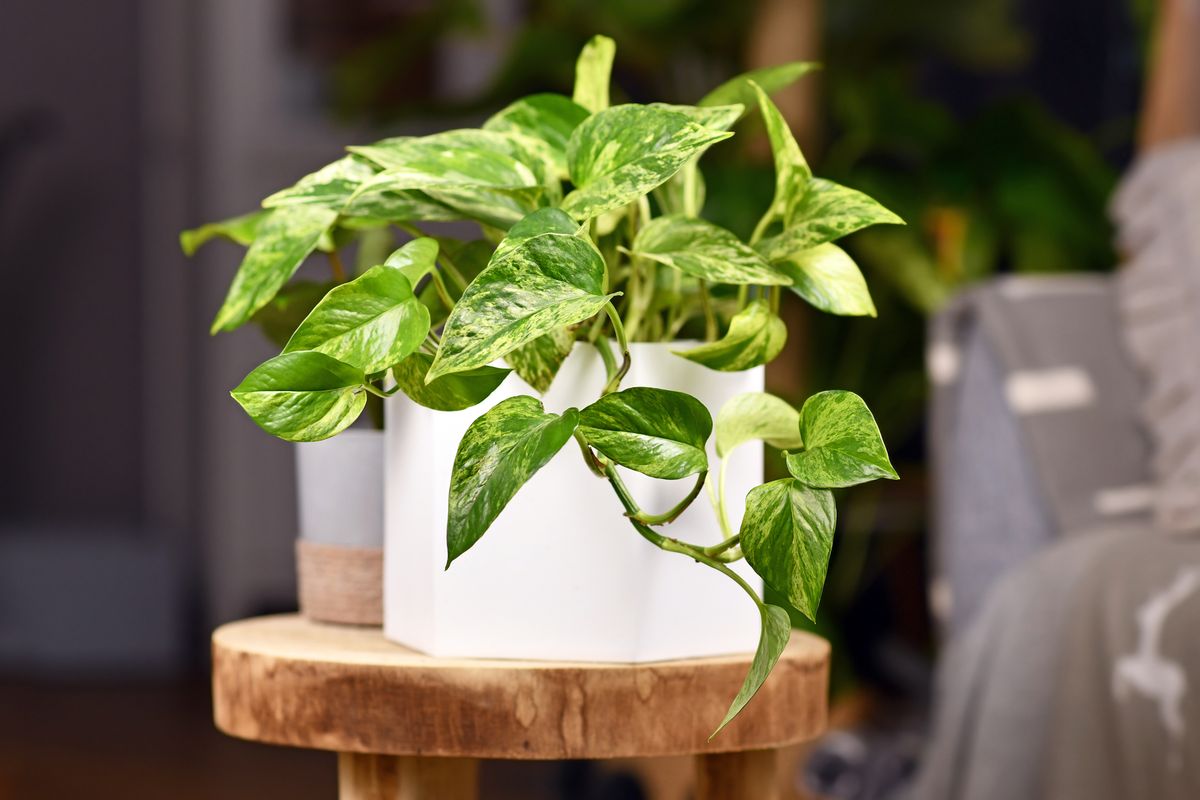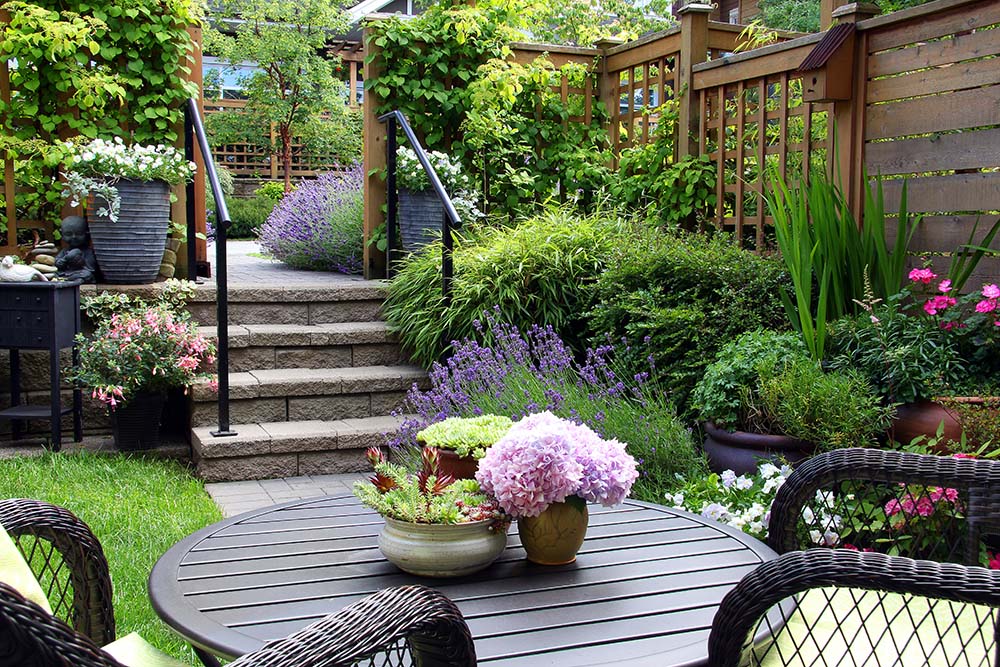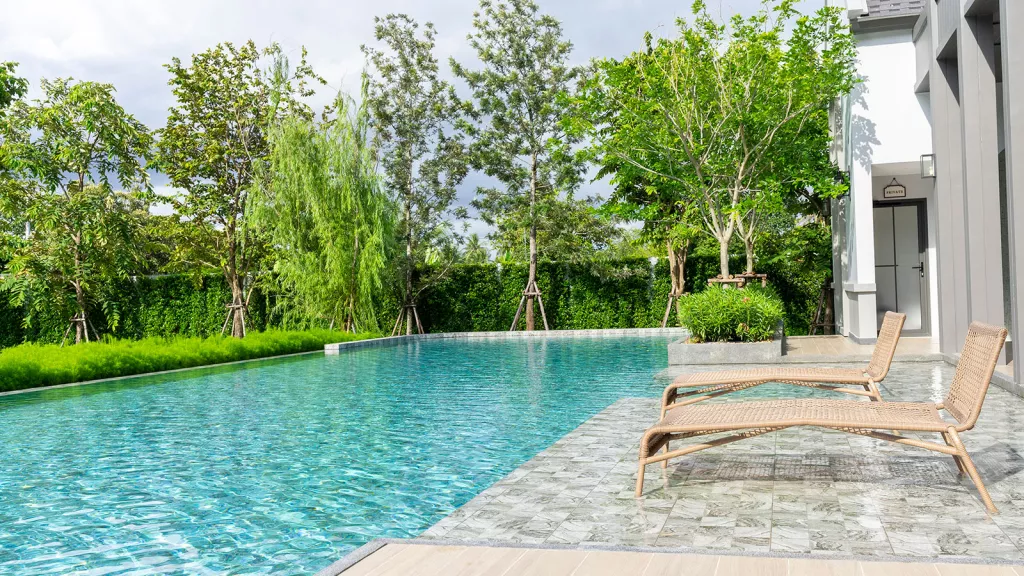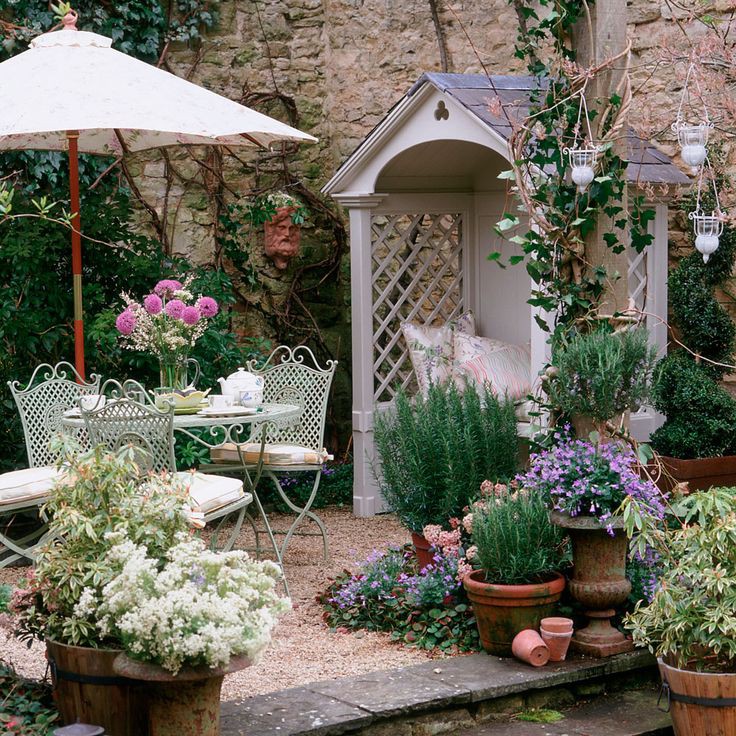Looking to create a garden that will stand the test of time? Look no further than these essential garden design ideas. No matter what you’re looking to achieve – from a complete overhaul of your outdoor space to attracting more wildlife or simply becoming more sustainable – we’ve got you covered with a range of fantastic garden ideas that are sure to transform your backyard, and even add value to your property. Lets talk about “15 Garden Design Ideas To Make The Best Of Your Outdoor Space“.
And if you’re just looking for some smaller updates, we’ve got plenty of advice and styling tips on everything from garden furniture and paving to lights, plants, borders, decking and more, so you can create an outdoor space that you’ll truly love spending time in.
But before you start making any major changes, it’s important to take a step back and look at your garden as a whole. According to Andrew Kyte at The Chelsea Gardener, you should take the time to understand your garden’s position, direction and outlook – this information can have a big impact on your planting choices and how you use your space.
Whether you have a small garden, a long and narrow garden, a cottage garden, or a courtyard garden, it’s crucial to observe where and when different parts of your garden get sunlight throughout the day. You should also consider how you want to use your garden – are you looking to plant and grow vegetables, relax and sunbathe, dine al fresco, or simply sit back and enjoy a cup of tea on a sunny morning?
By taking these factors into account, you can create a garden that’s both beautiful and functional, and that you’ll love spending time in for years to come.
1. Get your lawn into shape
When you look out at your garden, chances are the largest feature you see is your lawn. A strong and well-defined lawn can set the tone for the entire garden. And don’t be afraid to experiment with different shapes – it doesn’t have to be a boring rectangle. Ovals, circles, squares, and oblongs are all great options to consider. Of course, you’ll need the right tools to get the job done. Recently, there has been a surge in interest for robotic lawn mowers and ride-on mowers, with the Flymo Easi Glide 300 Electric Mower being a particularly popular choice, according to price comparison service PriceRunner.
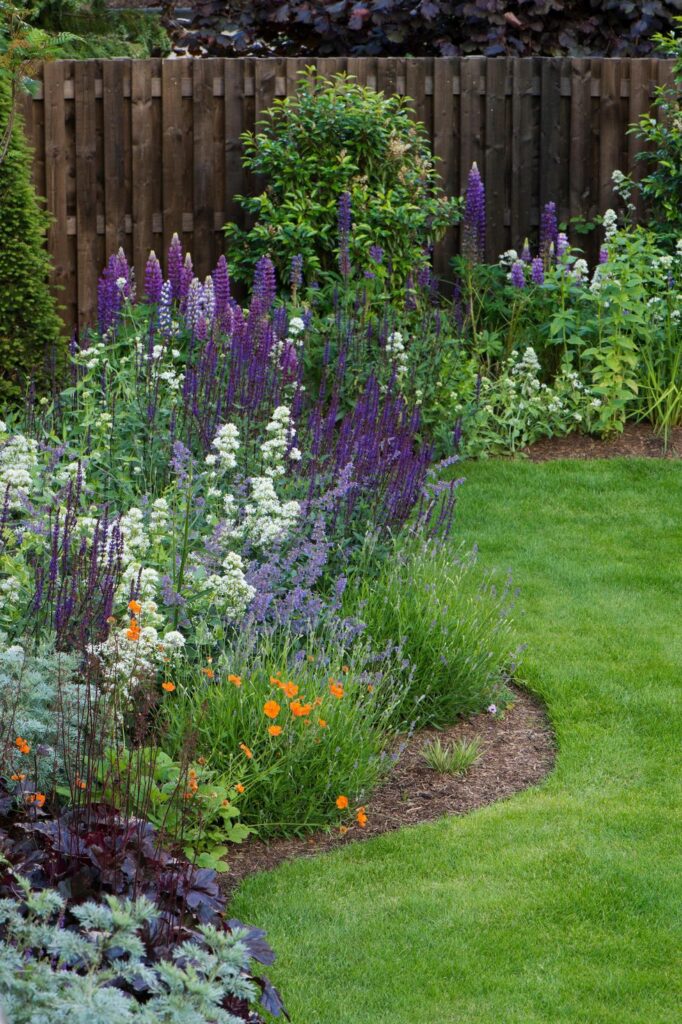
For ongoing lawn care and maintenance, Stuart Thomas, a gardening expert at online garden centre Primrose, suggests focusing on three key factors: sunlight, water, and soil aeration. If your lawn is looking a little lacklustre, try cutting back any overhanging branches that might be blocking sunlight. Water your lawn once a week in the morning if there hasn’t been enough rain. And for soil aeration, use a fork to poke plenty of holes in your lawn. Follow these tips, and you’ll soon have a lush, green lawn that you can be proud of. Just remember not to mow it too short!
However, with the growing popularity of natural wildlife gardens, you may want to consider leaving your lawn to grow longer and see what wildflowers start to appear. This trend is all about rewilding your garden and creating a space that looks like it’s a part of nature rather than a carefully designed and manicured space. As garden designer Ann-Marie Powell explains, “people want gardens that look like they are ‘of nature’ rather than the more obviously designed spaces.” To learn more about the ongoing debate about whether to mow or not to mow, check out our article: “The big lawn debate: to mow or not to mow?”
2. Plan your planting
Creating a well-designed garden involves choosing the right plants for both structure and aesthetics. Begin by using evergreen shrubs as anchors at the end of each border and along the way to create structure. You can opt for small shrubs, like box balls, or larger ones, such as mahonia, for more extensive spaces.
Once you have your structural plants in place, fill in the gaps with pretty flowering plants. Choose just five or six types and repeat them in patterns for a coordinated and harmonious effect. A border that is at least one meter deep provides enough space for smaller plants at the front and taller ones at the back.
Narrow, low-planted beds are perfect for defining seating or dining areas. Planted-up troughs or containers also work well, providing flexibility and allowing you to move them around as needed. For container gardening, Tony Woods, managing director of Garden Club London, recommends creeping rosemary for edging, as it trails rather than growing upright, is evergreen, and produces blue flowers in spring.
If you don’t have space for meter-deep beds, climbers are a great alternative for adding height to your planting. Evergreen climbers like clematis provide beautiful and colourful displays, while star jasmine is a well-behaved option that produces masses of scented white flowers throughout the summer and responds well to pruning.
When selecting flowering plants, try to choose some that bloom “out of season” to add year-round colour. Spring and early summer bulbs are also a great way to kickstart your garden’s growth.
Remember, choosing plants that work well together and suit your space is key to creating a garden that you’ll love for years to come.
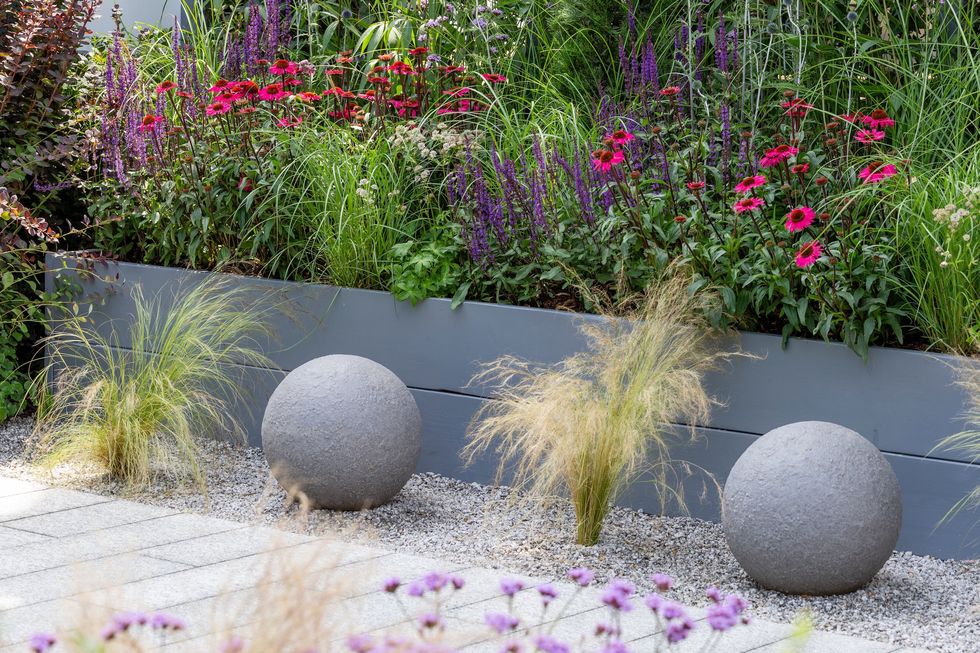
The Samphire Garden by Sue Townsend is a great example of how you can create a sustainable garden that is also visually stunning. The garden, located in Suffolk, features a mix of native seaside plants, grasses, and Mediterranean shrubs, all arranged amongst locally reclaimed York Stone paving.
The plants have been chosen for their drought tolerance, and include species such as verbena bonariensis, eryngiums, euphorbias, lavender, achillea, ballota, miscanthus nepalensis, pennisetum, verbena, and thymus. To help the garden conserve water, a stone mulch in different sizes surrounds the plants. It’s also important to use permeable surfaces in your garden so that water can be naturally released into the ground.
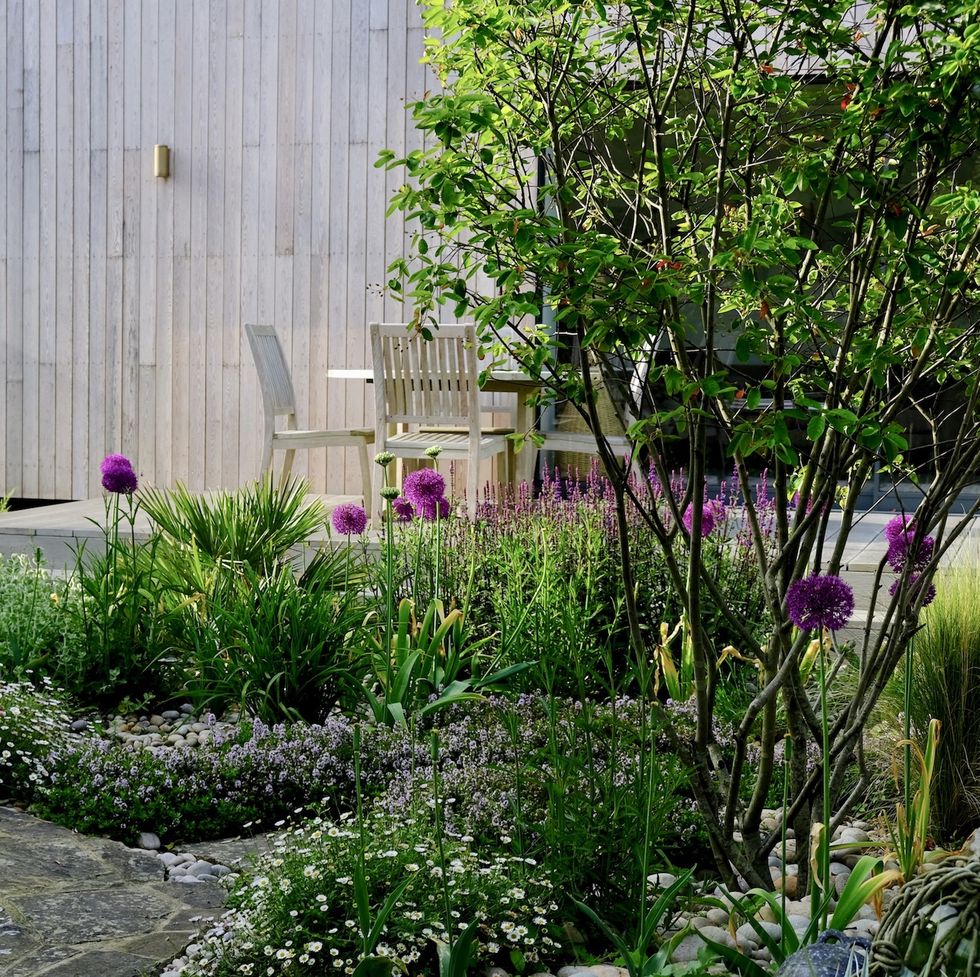
3. Trees
Mature trees can provide a foundation for creating a garden design. They can offer shade, serve as a support for various decorations, and block out unwanted views or noise. Furthermore, trees are valuable for nature as they provide a habitat for wildlife, offer food for pollinators, and absorb carbon dioxide from the atmosphere.
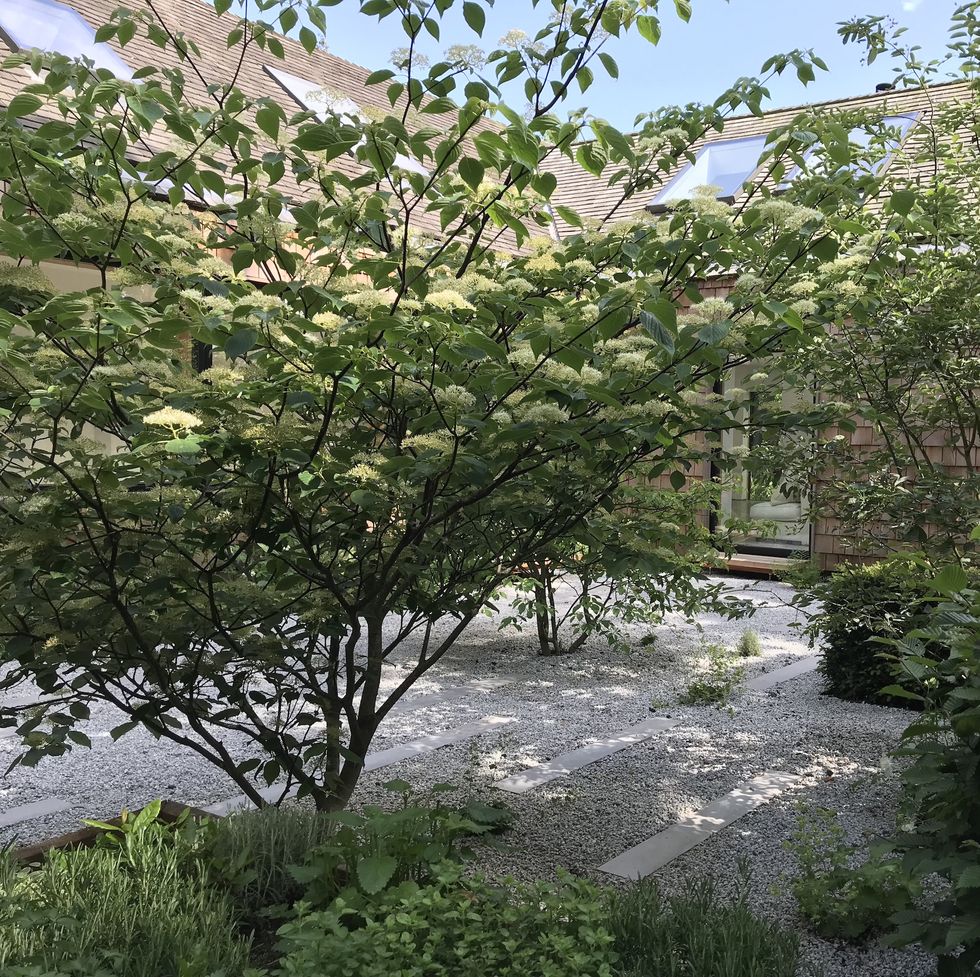
One popular trend is using multi-stem trees, which can create an impressive focal point in a garden. These trees have elegant canopies that can be underplanted with layers of foliage or left to make a striking statement on their own. An example of this style can be seen in a Suffolk garden designed by Caitlin McLauglin, which features a deconstructed woodland environment in a front courtyard garden.
According to Sarah Squire, Chair of Squire’s Garden Centres, trees can add both structure and natural beauty to a garden. Trees come in all shapes and sizes, from small potted plants to larger species like birch, whitebeam, and hornbeam. Therefore, there is a tree suitable for every type of garden.
4. Beautiful paving
The color and style of your paving can set the tone for the entire garden. For example, grey or white stone in a random pattern can give a French country feel, while black or silver paving in a regular design creates a modern look. Golden stone arranged in a mixed pattern can create an English country atmosphere.
Butter Wakefield’s Ribbon Wheel garden is a great example of an elaborate paving design. It features 10 interlinking circles made of limestone and York stone in different sizes and designs. The circles are connected by a ribbon of York cobblestones, creating a stunning effect.
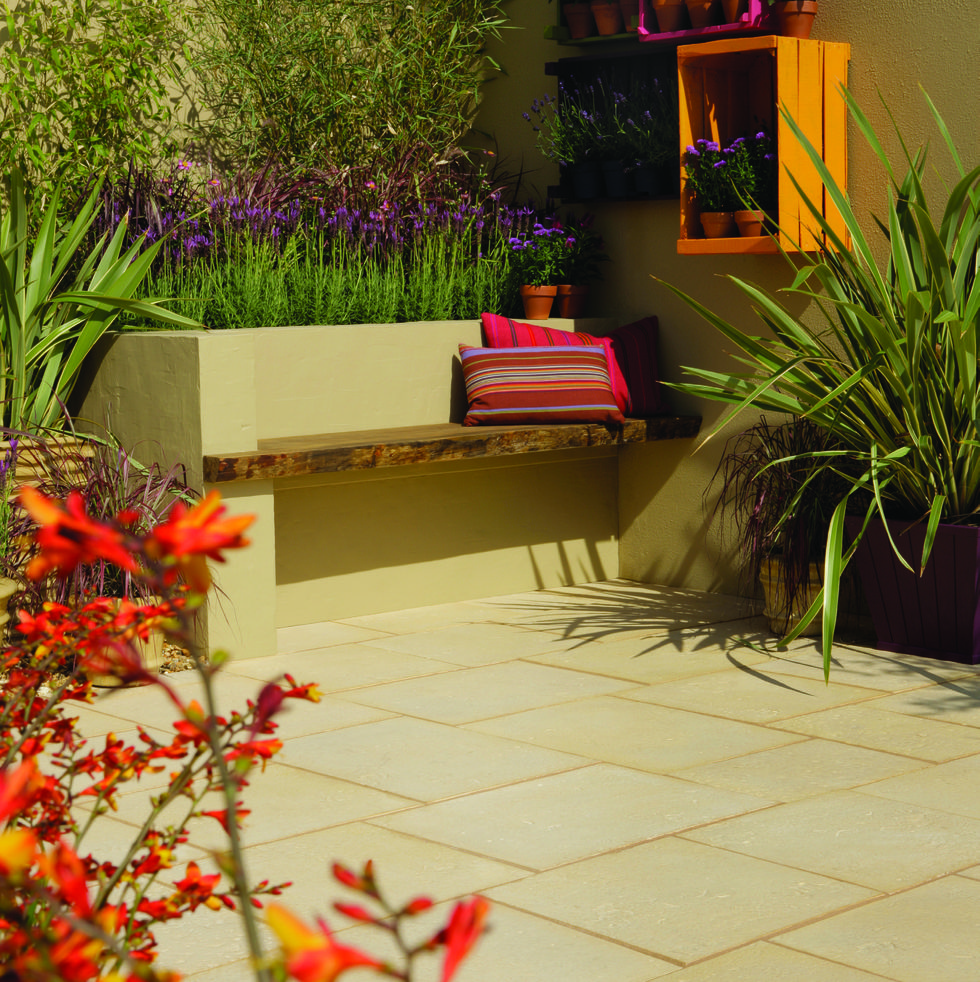
To create a cohesive garden design, coordinate your plants with your paving. Grey or white stone works well with purple and white blooms, while black and silver paving complements strong colors such as red, orange, and yellow. Golden paving pairs well with soft-tone flowers like pink, lavender, and chalky yellow.
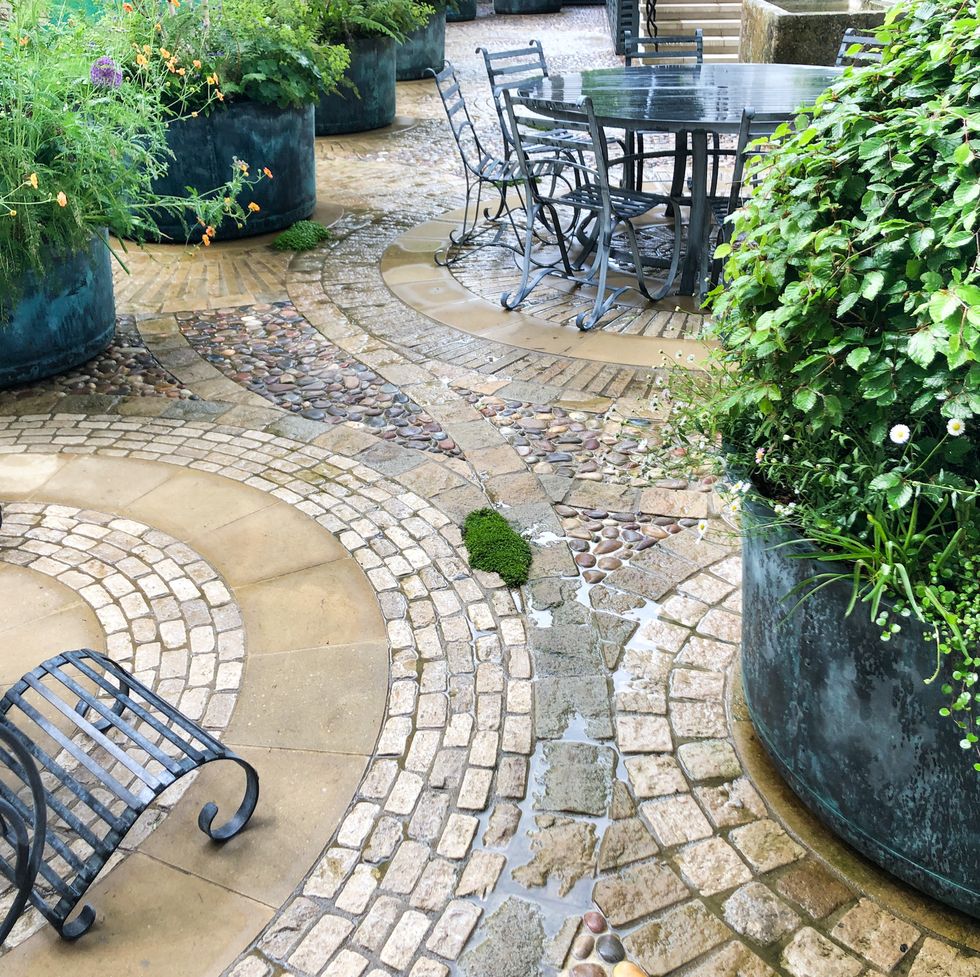
Michael John McGarr, director and garden designer at Warnes McGarr & Co, recommends using large-format porcelain paving, which requires less cleaning than traditional types of paving. He also suggests creating a seamless flow between your indoor and outdoor spaces by ensuring your paving is the same level as your indoor flooring.
Remember, attention to detail is key when creating your dream garden. A well-designed paving scheme can provide a strong foundation for the rest of your garden design.
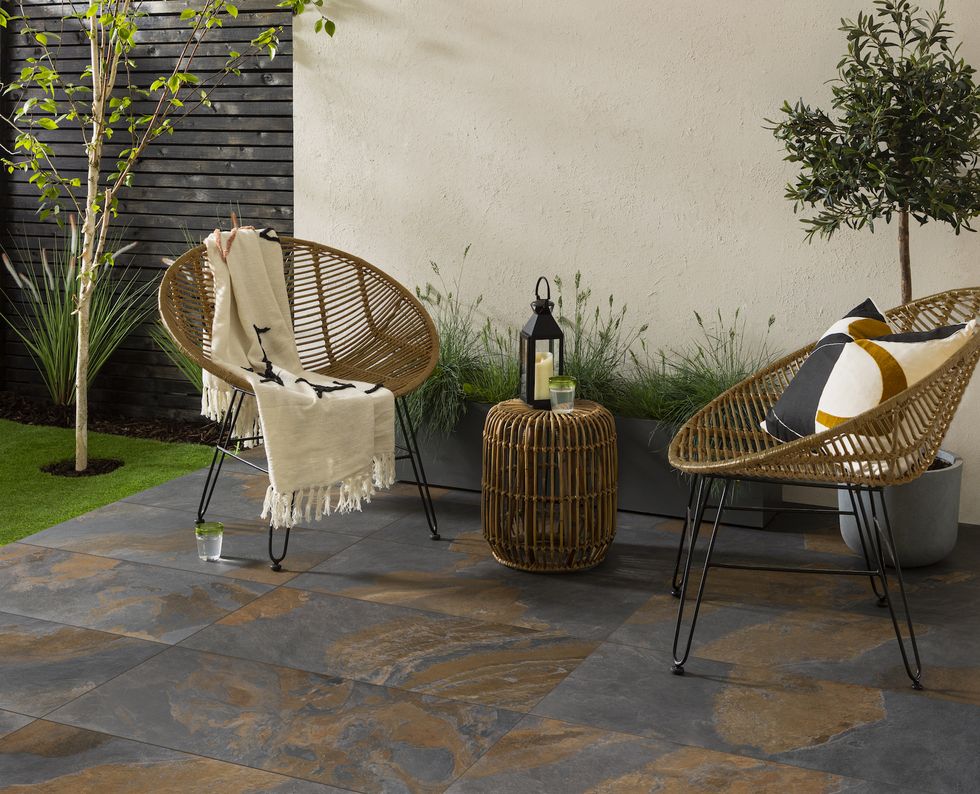
5. Distinct levels
Do you have a garden with different levels? If you want to avoid using stone steps, you can still achieve a smooth transition between spaces by integrating the existing lawn, as seen in the photo below. Garden designer Helen Elks-Smith used grass treads to connect the lower patio to the small sun terrace above.
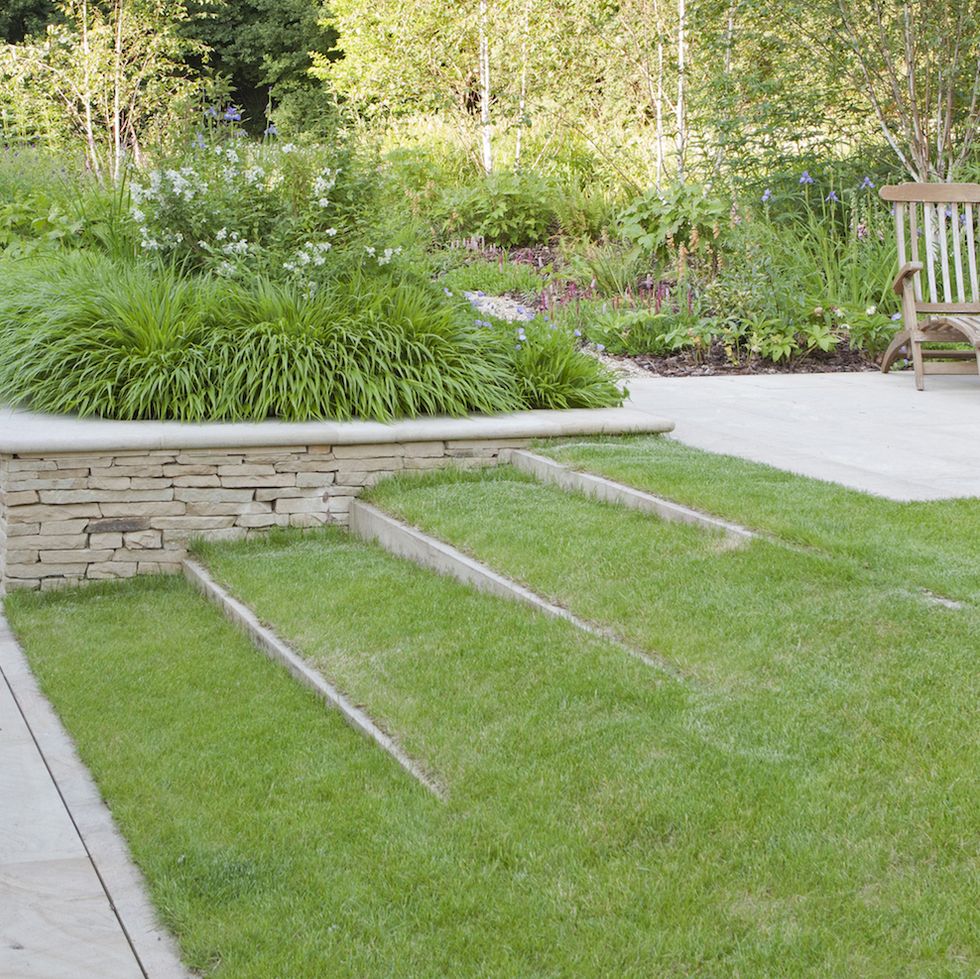
Helen Elks-Smith via Society of Garden Designers
Are you looking for decking ideas? If you have an uneven or sloping garden, decking is an ideal and cost-effective option for levelling it out. Decking can also have split levels and include steps, making it a great space for dining furniture. Since it’s used heavily, a decked garden area needs to withstand foot traffic.
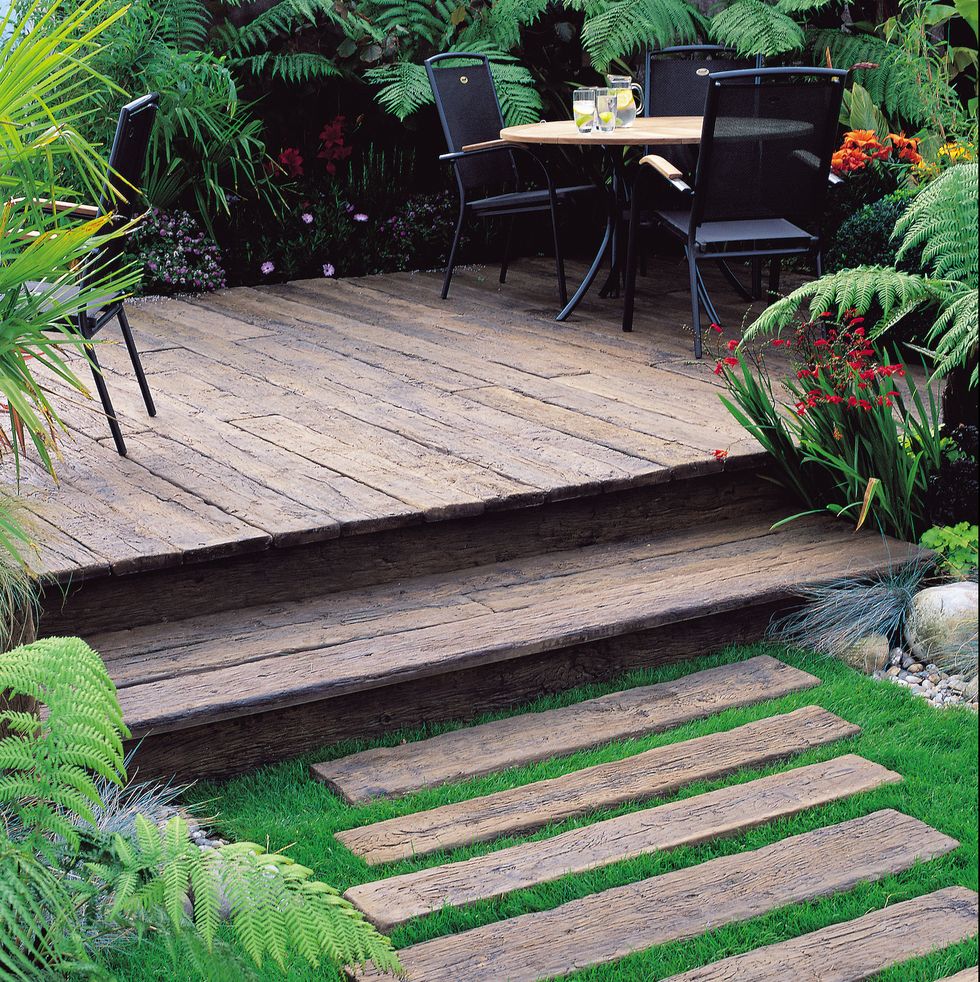
Garden House Design
Millboard’s composite decking boards are an eco-friendly, anti-slip, and maintenance-free option that combines polyurethane and a mineral blend, providing the beauty and versatility of natural wood without the upkeep. This wood-free decking has a non-porous outer layer, making it self-cleaning, with rain doing the hard work.
6. The furniture
If you have a small garden, opt for folding furniture or bench seating that can be easily stored when not in use. Larger spaces can accommodate full seating sets with matching chairs, sofas, tables, sun loungers, day beds, hanging egg chairs or swing seats. Choose a good quality garden furniture set that can last for years, and ensure there is enough room for people to sit comfortably and move around the table.
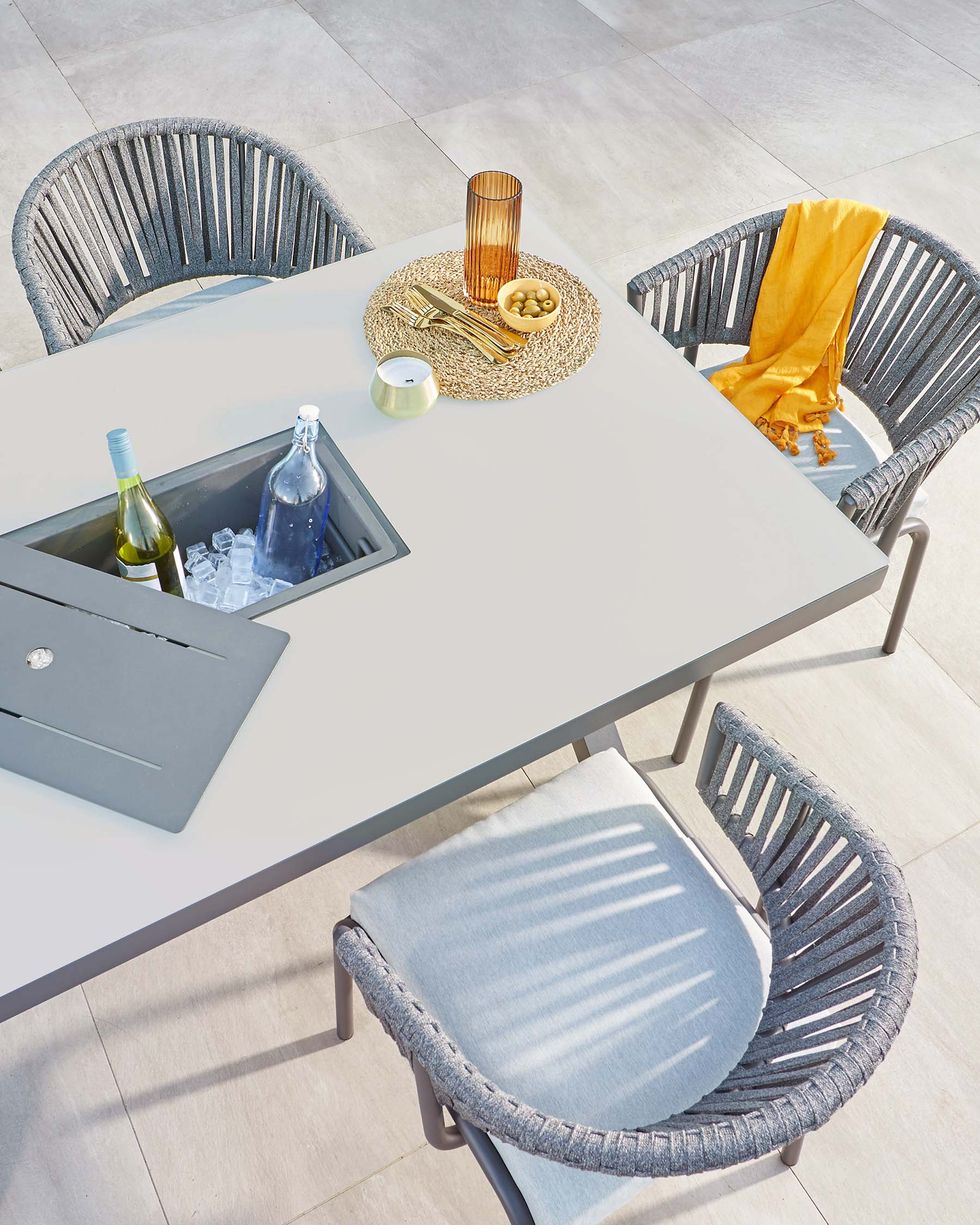
When placing furniture in your garden, consider the amount of sunlight it receives. Dining tables work best in areas with early afternoon full or partial sun, while smaller seating areas are ideal for enjoying the evening sun. Protect your furniture from the winter weather by using furniture covers or storing it indoors.
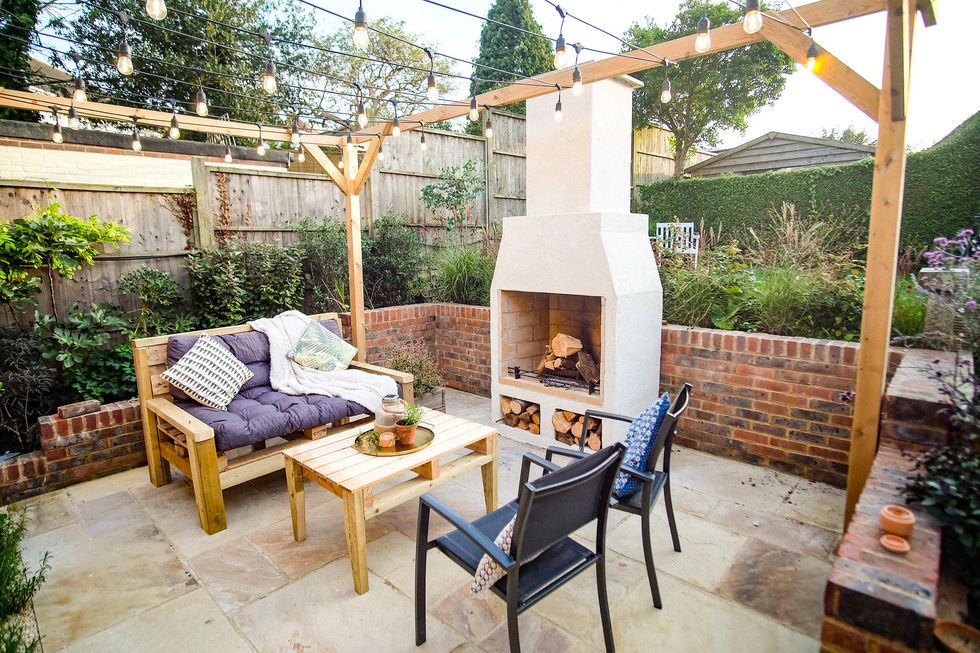
Accessories like outdoor cushions can add extra comfort to your garden furniture. Other garden must-haves include fire pits, chimineas, patio heaters, barbecues and pizza ovens. Plan space for these items and consider where they will be stored or protected during the winter months.
7. Pay attention to your boundaries
In a small garden, the boundary walls, fences or hedges can be the dominant feature, so it’s important for them to look good. They don’t all have to be the same, but it’s good to create visual links between them. You could have the same type of fence and grow climbers up them in coordinating colors. If you can’t change the fences, you could whitewash them or clad them with battens or trellis. However, always ask your neighbors for permission before doing any work on the fence.
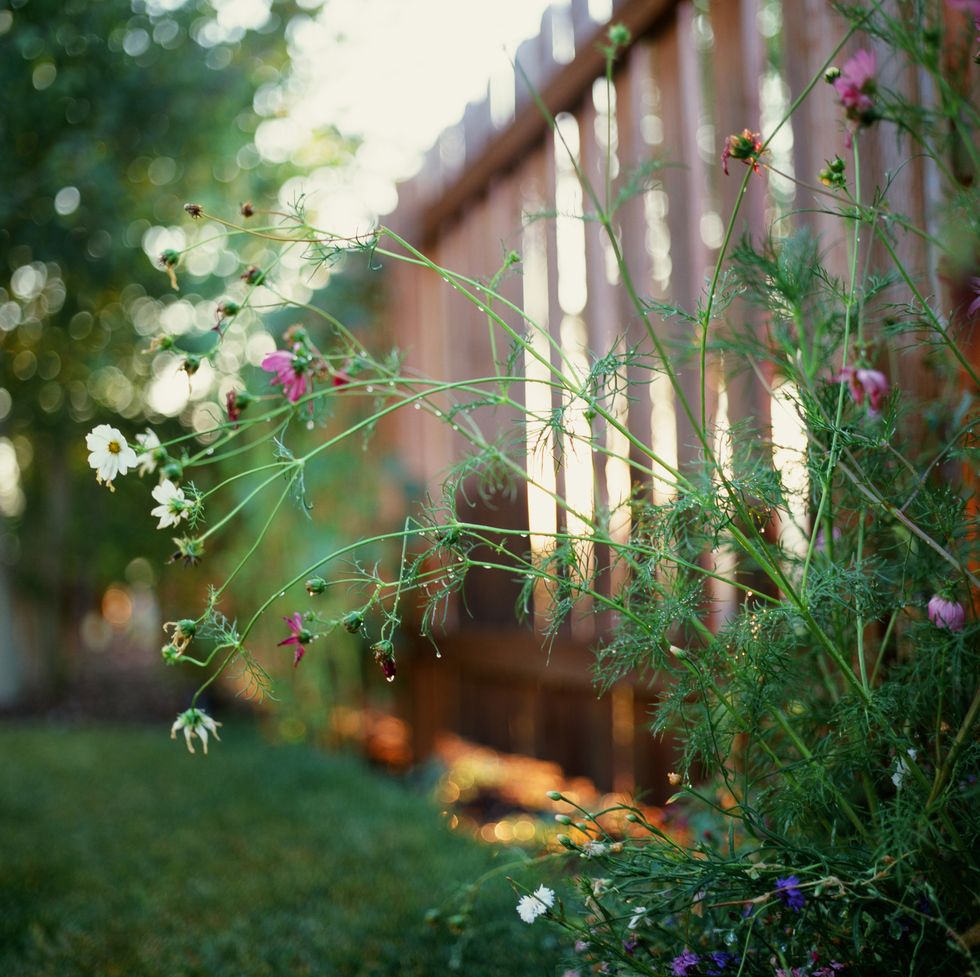
The materials you choose for your garden’s boundary are also important. For example, timber posts can be used not only to fence the garden off from the neighbors but also to frame plants or seating areas and add extra interest to borders or paths.
A really inventive use of timber posts can be seen in the NHS 70 Garden for Addenbrooke’s Hospital by garden landscape company Bowles & Wyer. They used reclaimed oak posts to frame the view along a meandering path at its center, positioning them at different heights and angles so that visitors can enjoy new aspects of the space as they make their way through.
8. Screening and zoning
To create different areas in your garden, you can use features like pergolas or fences, or use plants to create screens. Hardy rose bushes or tall bamboo are good options, as well as potted trees. Zoning different areas in your garden is also a good idea, regardless of its size or shape.
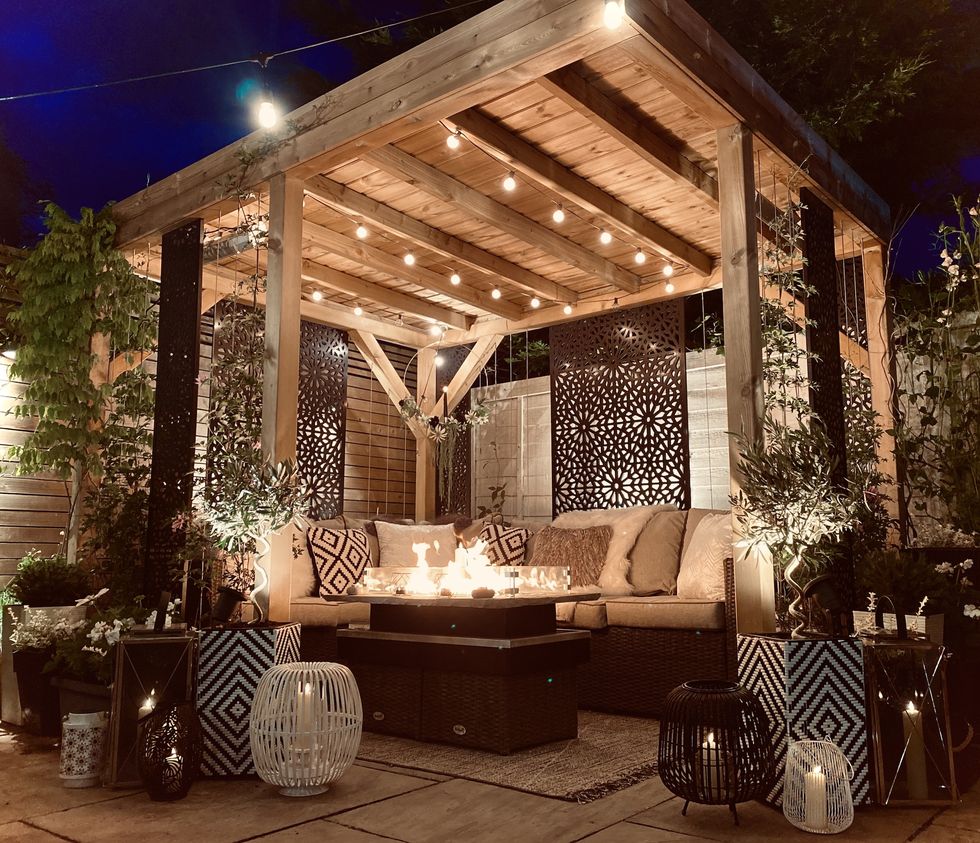
@ourhomeonthefold (via Screen With Envy)
With homes becoming smaller, many people are looking to their gardens as an extension of their living space, so it’s important to create different zones for relaxation and entertainment.
9. Accessorise the fifth room
To create a relaxing and cosy outdoor space, consider incorporating tactile furnishings and garden decor. Think about creating a living room look, but outdoors. For instance, you can use an outdoor rug, like those made from recycled plastic by Fab Hab, along with chunky knit throws, lanterns, and outdoor cushions to make the space inviting and snug.
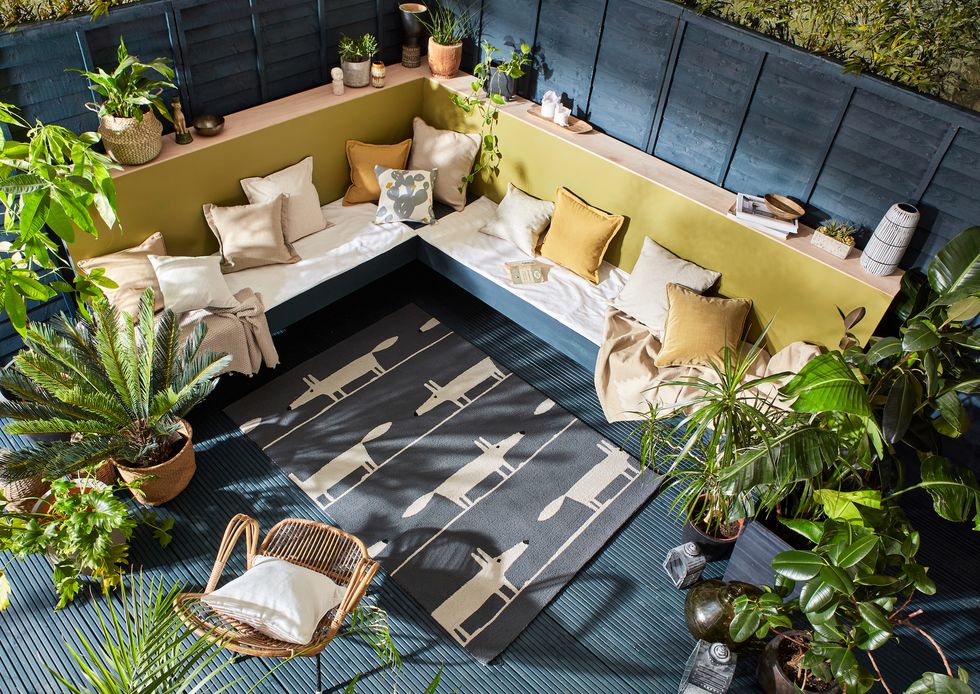
The Rug Seller/Andy Gore
Garden mirrors can reflect light, while waterproof speakers and citronella candles can enhance the experience. Also, consider investing in a patio heater for chilly evenings and dotting smaller potted plants around the space.
10. Integrate your ornaments
When it comes to garden ornaments, it’s important to place them amongst the plants. Avoid choosing an ornament or water feature that is placed in the middle of an empty area, as it is unlikely to look appealing. If the ornament is too small, it will appear insignificant, and if it’s too big, it may overpower the space and even reduce the value of your property when you decide to sell it.
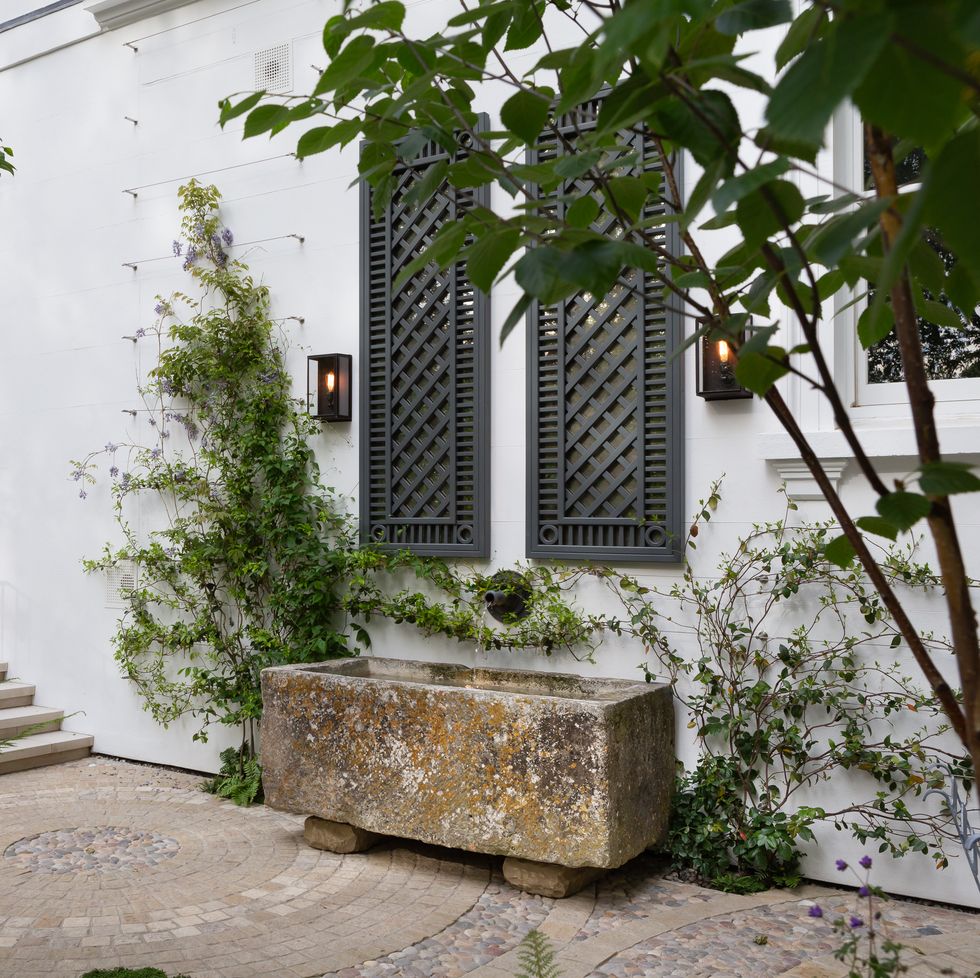
Butter Wakefield via Society of Garden Designers
If you enjoy the sound of running water in your garden but don’t want a fountain, consider incorporating a simple stone trough with a water spout, like the one seen in Butter Wakefield’s Ribbon Wheel garden. The antique trough has wall panels hanging above it, featuring antiqued mirrors that reflect the garden’s greenery, and is painted in a dark grey shade that contrasts well with the plants.
11. Install a garden room
If you’re looking to expand your living space and want to create a home office or yoga studio, a garden room is an excellent option that usually doesn’t require planning permission. Whether you opt for a large shed or summerhouse, it can serve as an ideal location for hosting guests during the summer season, or even as additional accommodation for visitors.
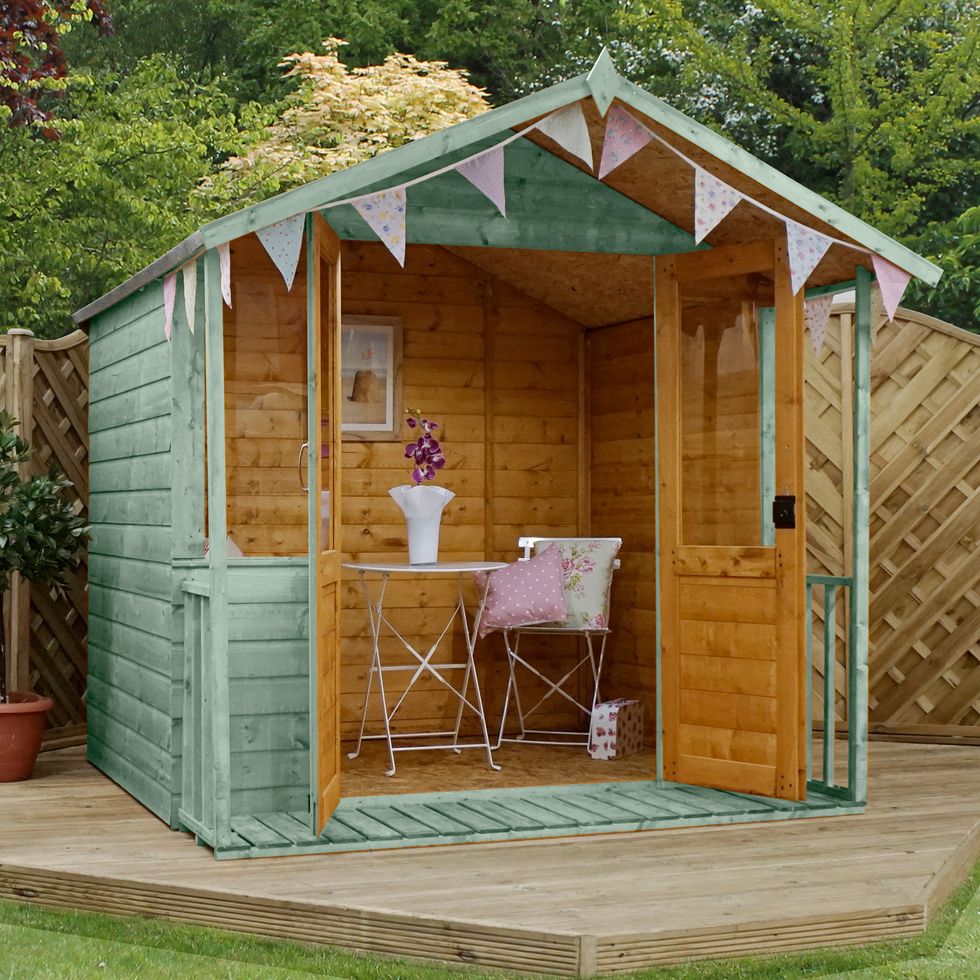
Homebase
Consider how you can transform your garden into more than just an outdoor space for dining, drinking, and basking in the sun.
12. Living walls
Vertical planting is taking the gardening world by storm, and living walls are a great way to incorporate this trend into your outdoor space. These walls are becoming increasingly popular in garden designs, providing a stunning way to add drama and embrace the vertical dimension. With the right selection of plants, you can position a living wall anywhere in your garden, just like you would with a border. You’ll find plenty of green wall kits and living wall planters in the market, so make sure to explore and choose the one that best suits your space.
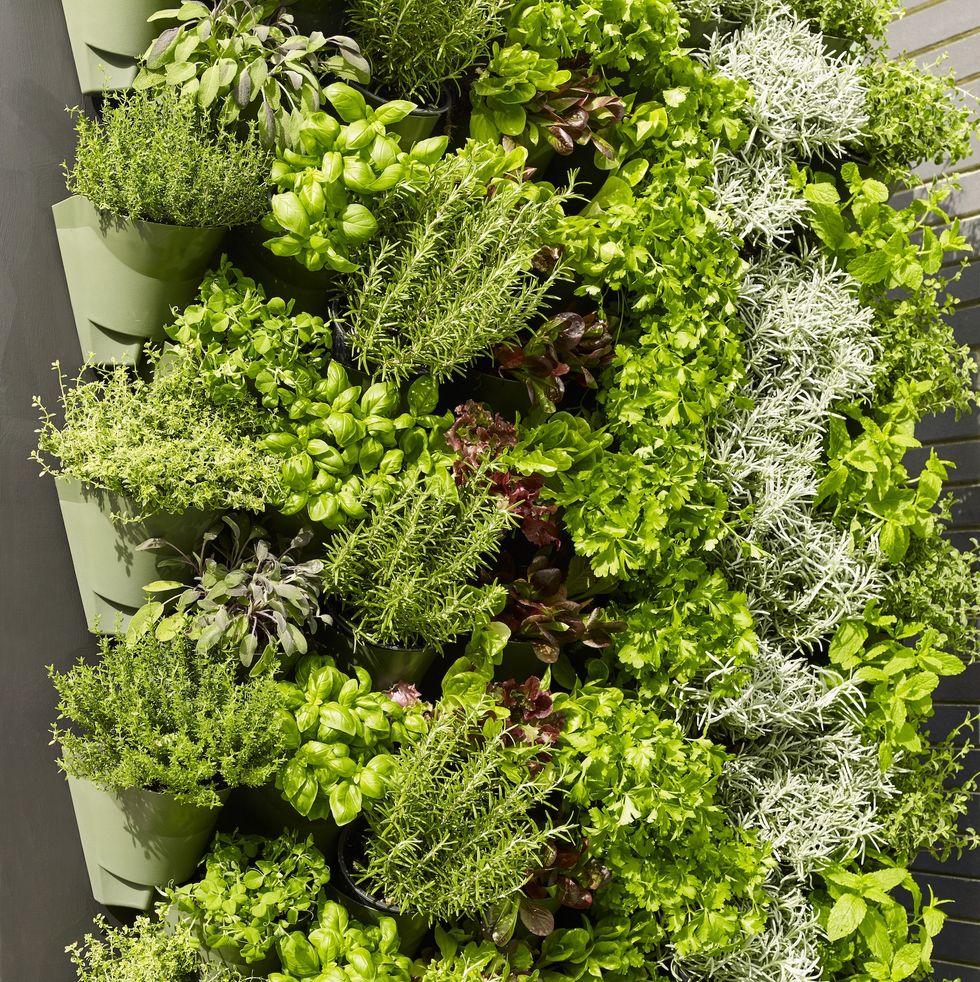
Dobbies
If you want to make a bigger statement, you can invest in high-impact living wall systems that vary in cost depending on the complexity you desire. These systems can fill large expanses of wall and transform the look and feel of your outdoor area.
John Davies incorporated hydroponic walls into the roof and basement gardens of an office building in London, using a combination of flowering shrubs and perennials such as buddleia and fuschia. This approach not only complements the evergreen planting framework but also creates a year-round effect with seasonal colors.
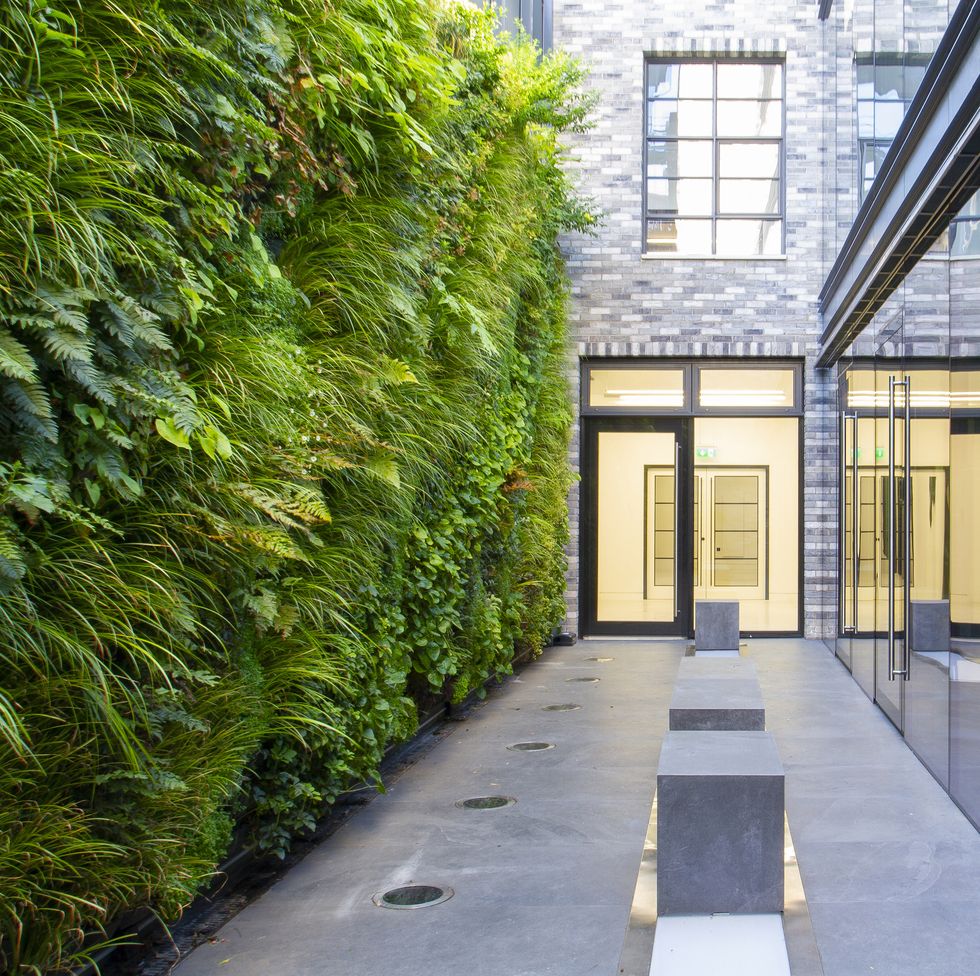
John Davies via Society of Garden Designers
Another way to create an instant living wall is to use your garden walls for planting. By using trellises or containers, you can add a vertical element to your outdoor space with climbing plants and wall shrubs like clematis, roses, honeysuckle, or wisteria.
Don’t miss out on the opportunity to incorporate living walls into your outdoor space. Whether you opt for a simple or complex living wall system, or use your garden walls for planting, these walls will add beauty, depth, and dimension to your garden.
13. Don’t forget the lights
When it comes to creating a beautiful and inviting garden, lighting is a key factor that should not be overlooked. Similar to indoor lighting, layering up your garden lighting can help you create the desired ambiance. It’s best to choose a variety of lighting sources, including fairy lights, festoon lights, wall lights, freestanding lamps, and ground lights, among others. You can find a great range of outdoor lighting options at Lights4Fun.
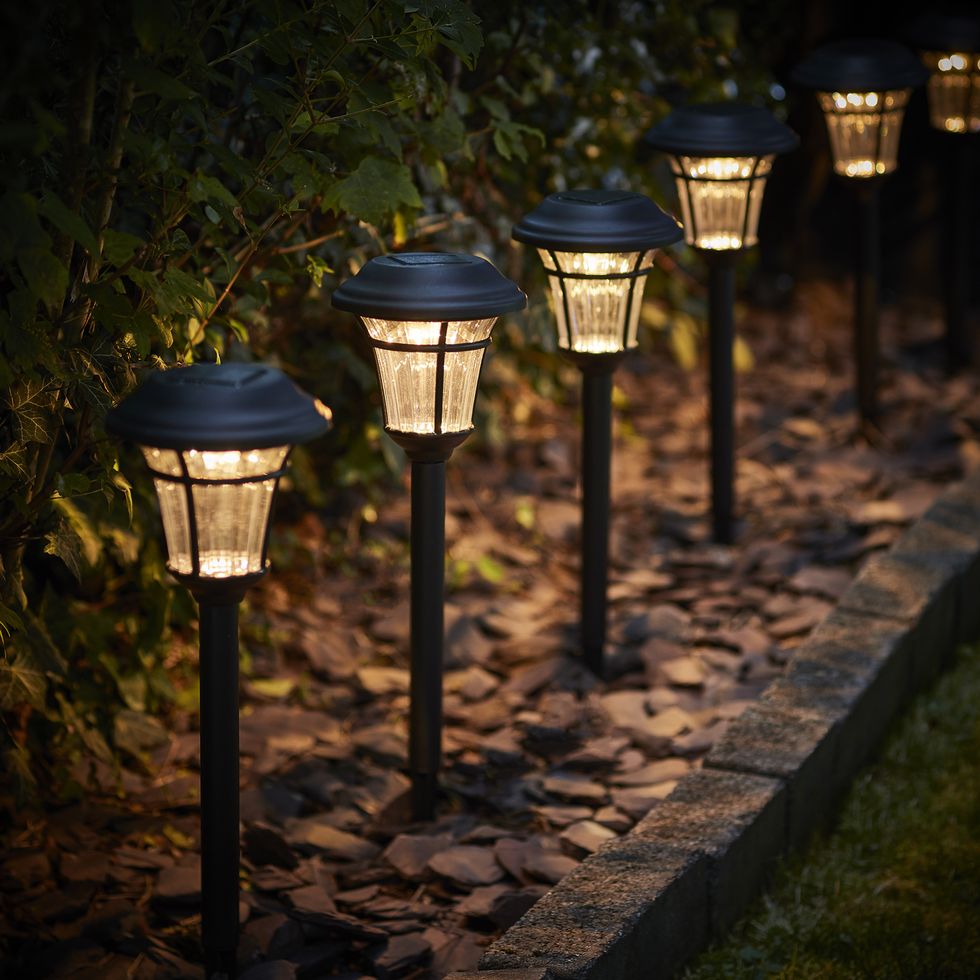
Oliver Perrott Photography Ltd
According to Jon Holloway, outdoor lights and a fire pit can help you enjoy your garden space even after the sun sets or if the weather is not ideal. Whether you choose to use fairy lights or lanterns along a garden path, the lighting you choose will add character, ambience, and atmosphere to your outdoor space. This is especially important if you plan to dine alfresco well into the evening.
To ensure that you create the desired atmosphere in your garden, make sure to experiment with different types of lighting sources and combinations until you find the perfect mix that suits your taste and style.
14. Small space solutions
If you have a small garden, vertical planting is a great way to maximise space. You can make use of fences and walls by planting upwards, and hanging baskets are also an excellent option for front gardens. Additionally, gravel is a more affordable option for paving.
Remember, having a small garden doesn’t mean you can’t enjoy it to the fullest. There are plenty of space-saving options available, such as foldable or stackable table and chair sets that are perfect for compact spaces. Investing in a garden bistro set not only adds style but also functionality to your outdoor space. Deck chairs are also a great option for easy and instant seating.
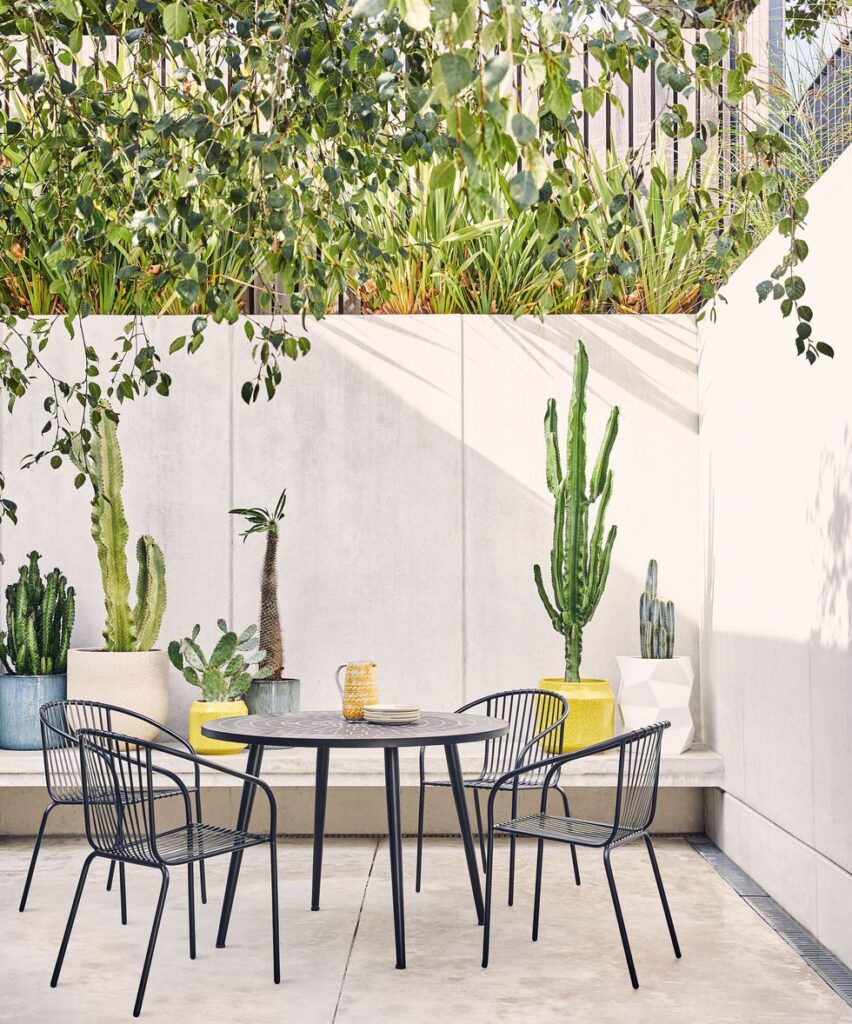
Habitat
Don’t let limited space hold you back from creating a beautiful and functional outdoor area. With the right planning and design, you can make the most of your small garden and enjoy it all year round.
15. A family garden
When designing a family garden, smart landscaping can help maximise space and ensure that it caters to everyone’s needs. One great example is Adolfo Harrison’s hidden playground in east London, which incorporates elements of play into the design so that both children and adults can enjoy the space.
Monkey bars form a pergola, allowing for swings and slides to be attached, while boulder stepping stones enable children to jump from one to the other along the length of the garden. Two moon benches provide a snug place to sit, set within a living wall to create a playful face. Mirrors are used to make the space feel bigger, and a ‘ceiling’ created by the canopy of long-stemmed bamboos focuses attention within the space and creates a more intimate atmosphere.
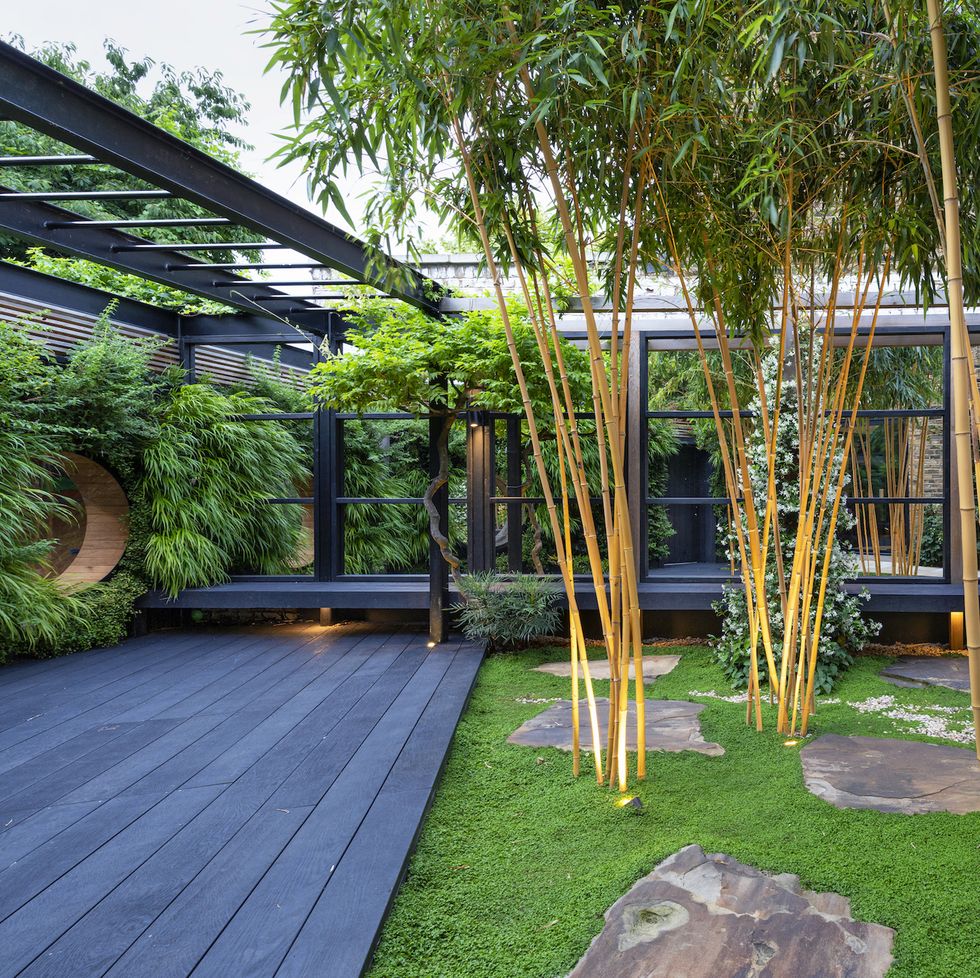
Richard Bloom via Society of Garden Designers
When designing a garden for kids, it’s important to zone an area for play, especially in small family gardens where play equipment can dominate the space. While large gardens may have enough space for a slide or playhouse, smaller spaces can incorporate sand tables or mud kitchen play sets in a corner, providing hours of entertainment for children.
With some creative landscaping, you can create a functional and fun family garden that works for everyone.
